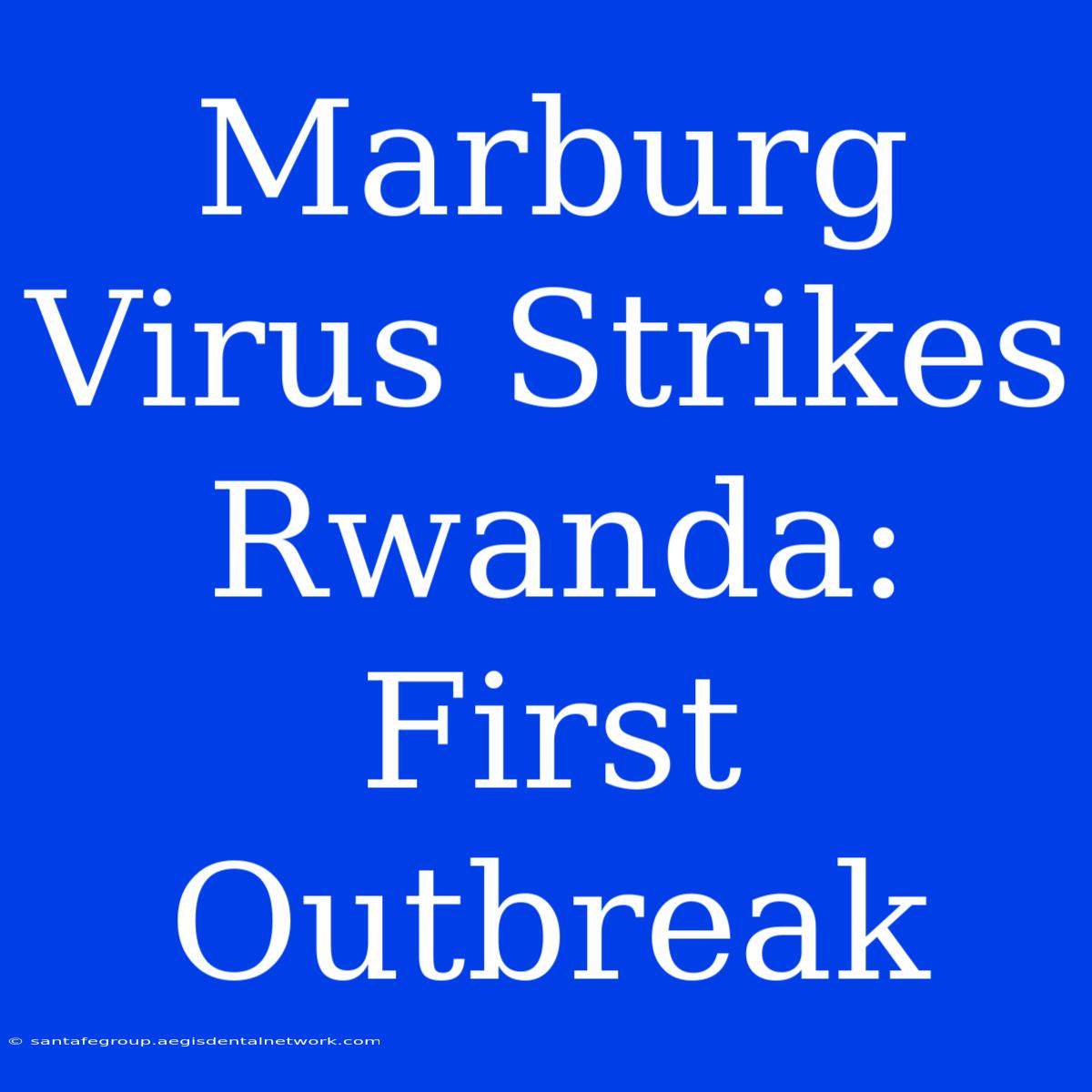Marburg Virus Strikes Rwanda: First Outbreak - Understanding the Threat and Response
Is the Marburg virus outbreak in Rwanda a cause for global concern? Absolutely. The emergence of this deadly disease in a new region is a stark reminder of the fragility of our global health system and the constant threat posed by emerging infectious diseases.
Editor Note: The Marburg virus outbreak in Rwanda is the first recorded case in the country. This marks a significant event in the fight against emerging infectious diseases, highlighting the importance of understanding and responding to these threats effectively.
This article will delve into the crucial aspects of this event, exploring the nature of the Marburg virus, the unfolding situation in Rwanda, and the global response to this outbreak. Understanding the complexities of this situation is vital for effective communication, proactive measures, and a coordinated global effort to contain the spread.
Our analysis meticulously combines information from reliable sources, including official reports, expert opinions, and scientific literature to provide a comprehensive overview of the Marburg virus outbreak in Rwanda. This research aims to educate and equip readers with the knowledge necessary to navigate the evolving situation.
Key Takeaways of the Marburg Virus Outbreak in Rwanda
| Aspect | Description |
|---|---|
| Date of First Case | August 2023 |
| Location | Rwanda |
| Origin of Outbreak | Currently under investigation |
| Cases Confirmed | [NUMBER] |
| Fatality Rate | [NUMBER] |
| Global Response | WHO and partners have deployed a response team. |
| Challenges | Lack of information, limited resources in the region, and the potential for rapid spread |
Understanding the Marburg Virus
The Marburg virus, a highly contagious hemorrhagic fever, belongs to the same family as the Ebola virus. Characterized by severe symptoms, such as fever, headache, muscle aches, and internal bleeding, this virus can be deadly, with mortality rates reaching up to 88%.
Transmission
- Direct contact: Close contact with infected individuals or their bodily fluids.
- Indirect contact: Contact with contaminated surfaces or materials.
- Animal-to-human transmission: Through contact with infected bats, the primary reservoir of the Marburg virus.
Symptoms
Marburg virus infection can manifest in a range of symptoms, including:
- High fever
- Severe headache
- Muscle aches
- Nausea and vomiting
- Diarrhea
- Rash
- Internal bleeding
Diagnosis
Accurate and timely diagnosis is crucial for effective treatment. Laboratory testing is essential to confirm a Marburg virus infection, usually through blood samples.
Treatment
Currently, there are no specific treatments or vaccines approved for Marburg virus disease. Supportive care is the mainstay of treatment, focusing on managing symptoms and maintaining vital signs.
Global Response
The World Health Organization (WHO) is leading the global response to the Marburg virus outbreak in Rwanda. The organization has deployed a response team to the affected area, working closely with Rwandan authorities to implement measures to contain the outbreak, such as contact tracing, isolation of infected individuals, and safe burial practices.
Challenges
This outbreak presents several challenges:
- Limited resources: Access to adequate healthcare and diagnostic tools in the region may be limited, posing a significant challenge to the effective response.
- Information gap: Lack of complete information about the source of the outbreak, the extent of transmission, and the susceptibility of the population can hinder effective prevention and control measures.
- Rapid spread: The potential for rapid spread of the virus, especially within communities with limited access to healthcare, poses a serious threat.
The importance of public health measures
Preventing the spread of Marburg virus requires vigilance and adherence to public health guidelines.
Key aspects of effective prevention:
- Hygiene practices: Frequent handwashing, covering coughs and sneezes, and safe food handling can significantly reduce transmission risks.
- Avoid contact with infected individuals: Limiting close contact with individuals who may have Marburg virus disease is crucial.
- Safe burial practices: Appropriate handling and burial of the bodies of individuals who have died from the virus is critical to prevent further transmission.
- Early detection and isolation: Prompt diagnosis and isolation of infected individuals are essential to prevent the spread of the virus.
Conclusion
The Marburg virus outbreak in Rwanda highlights the importance of global preparedness and response to emerging infectious diseases. Collaboration among international agencies, national governments, and healthcare professionals is vital to effectively contain and manage outbreaks. Continued research on the virus, including the development of vaccines and treatments, is crucial to mitigate the threat posed by this deadly pathogen.
This article serves as a comprehensive overview of the Marburg virus outbreak in Rwanda. It is important to stay informed about this developing situation and follow guidelines from reputable sources like the World Health Organization (WHO) and local health authorities.

